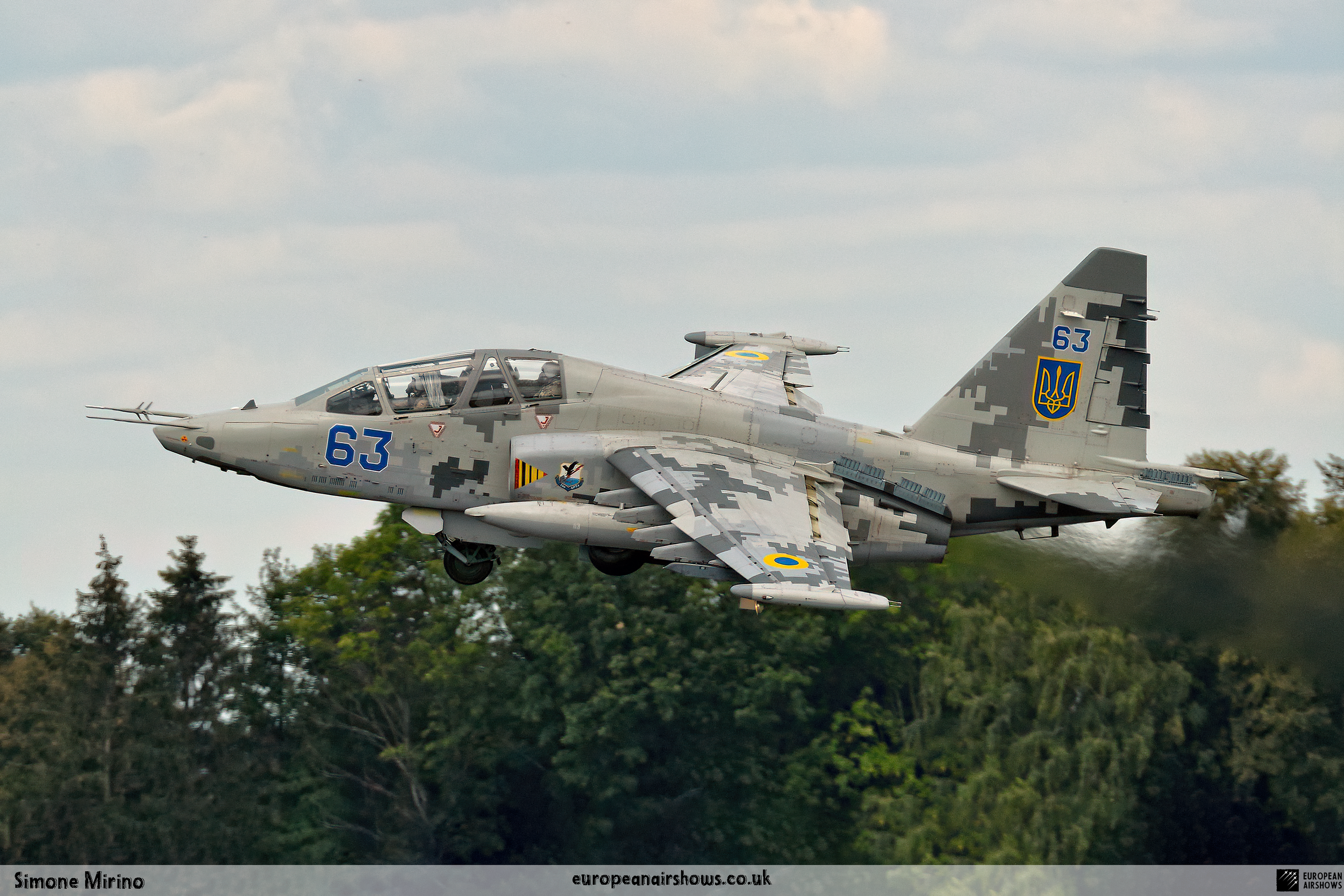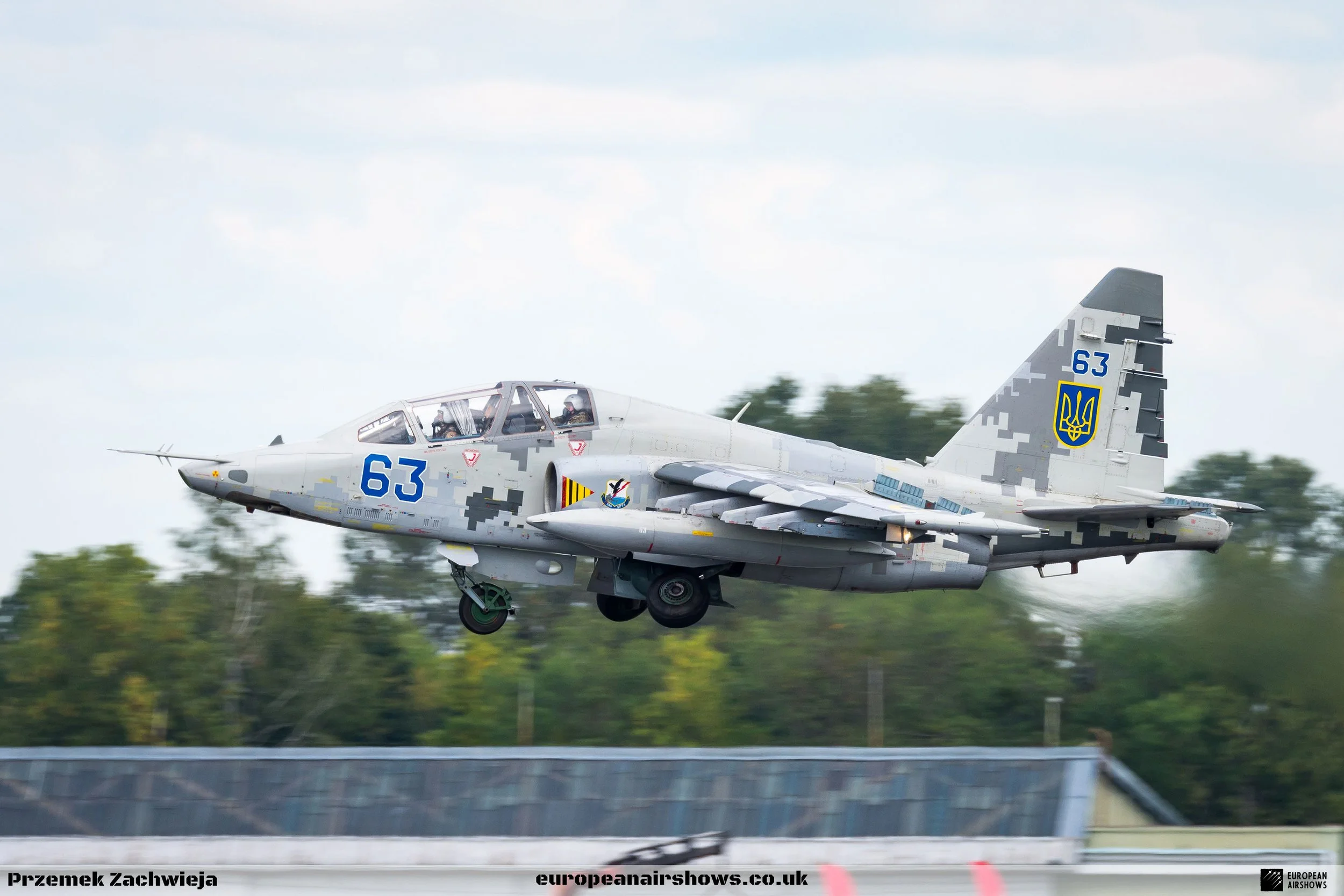
February 22 / Sukhoi Su-25 first flight
First Flight 22 February 1975
Sukhoi Su-25
The Sukhoi Su-25 Grach (NATO reporting name: Frogfoot) is a subsonic, single-seat, twin-engine jet aircraft developed in the Soviet Union by Sukhoi. It was designed to provide close air support for Soviet Ground Forces. The first prototype made its maiden flight on 22 February 1975. After testing, the aircraft went into series production in 1978 in Tbilisi in the Georgian Soviet Socialist Republic.
Early variants included the Su-25UB two-seat trainer, the Su-25BM for target-towing, and the Su-25K for export customers. Some aircraft were upgraded to the Su-25SM standard in 2012. The Su-25T and the Su-25TM (also known as the Su-39) were further developments, not produced in significant numbers. The Su-25, and the Su-34, were the only armoured, fixed-wing aircraft in production in 2007. Su-25s are in service with Russia, other CIS members, and export customers. Production of the Su-25 ended in 2017 in Russia and 2010 in Georgia. Attempts continue to be made to restart production in Georgia using partially completed airframes, but as of June 2022, no new deliveries have been reported.
Since entering service more than 41 years ago, the Su-25 has seen combat in several conflicts. The type was heavily involved in the Soviet–Afghan War, flying counter-insurgency missions against the Afghan Mujahideen. The Iraqi Air Force employed it against Iran during the 1980–88 Iran–Iraq War. Most Iraqi examples were later destroyed or flown to Iran in the 1991 Persian Gulf War. The Georgian Air Force used Su-25s during the Abkhazian War from 1992 to 1993. The Macedonian Air Force used Su-25s against Albanian insurgents in the 2001 Macedonian conflict and, in 2008, Georgia and Russia both used Su-25s in the Russo-Georgian War. African states, including the Ivory Coast, Chad, and Sudan have used the Su-25 in local insurgencies and civil wars. Recently, the Su-25 has seen service in the Russian intervention in the Syrian Civil War, the clashes of the 2020 Nagorno-Karabakh War, and the 2022 Russian invasion of Ukraine.
In early 1968, the Soviet Ministry of Defence decided to develop a specialised shturmovik armoured assault aircraft in order to provide close air support for the Soviet Ground Forces. The idea of creating a ground-support aircraft came about after analysing the experience of ground-attack (shturmovaya) aviation during the 1940s, 1950s, and 1960s. The Soviet fighter-bombers in service or under development at the time (Su-7, Su-17, MiG-21 and MiG-23) did not meet the requirements for close air support of the army. They lacked essential armour plating to protect the pilot and vital equipment from ground fire and missile hits, and their high flight speeds made it difficult for the pilot to maintain visual contact with a target. Having taken into account these problems, Pavel Sukhoi and a group of leading specialists in the Sukhoi Design Bureau started preliminary design work in a comparatively short period of time, with the assistance of leading institutes of the Ministry of the Aviation Industry and the Ministry of Defence.
In March 1969, a competition was announced by the Soviet Air Force that called for designs for a new battlefield close-support aircraft. Participants in the competition were the Sukhoi design bureau and the design bureaus of Yakovlev, Ilyushin and Mikoyan. Sukhoi finalised its "T-8" design in late 1968 and began work on the first two prototypes (T8-1 and T8-2) in January 1972. The T8-1, the first airframe to be assembled, was completed on 9 May 1974. Another source says November 1974. However, it did not make its first flight until 22 February 1975, after a long series of test flights by Vladimir Ilyushin. The Su-25 surpassed its main competitor in the Soviet Air Force competition, the Ilyushin Il-102, and series production was announced by the Ministry of Defence.
During the flight-testing phases of the T8-1 and T8-2 prototypes' development, the Sukhoi Design Bureau's management proposed that the series production of the Su-25 should start at Factory No. 31 in Tbilisi, Soviet Republic of Georgia, which at that time was the major manufacturing base for the MiG-21UM "Mongol-B" trainer. After negotiations and completion of all stages of the state trials, the Soviet Ministry of Aircraft Production authorised the manufacture of the Su-25 at Tbilisi, allowing series production to start in 1978.
In the late 1980s and early 1990s, several Su-25 variants appeared, including modernised versions, and variants for specialised roles. The most significant designs were the Su-25UB dual-seat trainer, the Su-25BM target-towing variant, and the Su-25T for antitank missions. In addition, a Su-25KM prototype was developed by Georgia in cooperation with Israeli company Elbit Systems in 2001, but so far this variant has not achieved much commercial success. As of 2007, the Su-25 was the only armoured aircraft still in production.
The Russian Aerospace Forces, which operates the largest number of Su-25s, planned to upgrade older aircraft to the Su-25SM variant, but funding shortfalls had slowed the progress; by early 2007 only seven aircraft had been modified.




